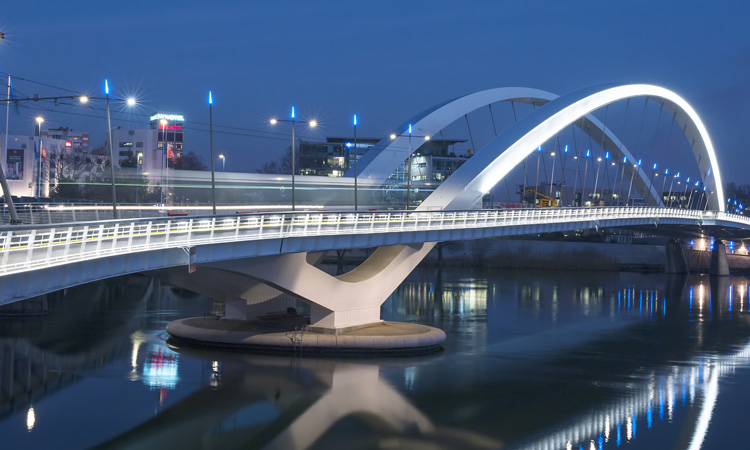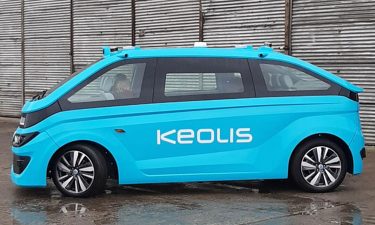Forging ahead with integration and the French mobility revolution
- Like
- Digg
- Del
- Tumblr
- VKontakte
- Buffer
- Love This
- Odnoklassniki
- Meneame
- Blogger
- Amazon
- Yahoo Mail
- Gmail
- AOL
- Newsvine
- HackerNews
- Evernote
- MySpace
- Mail.ru
- Viadeo
- Line
- Comments
- Yummly
- SMS
- Viber
- Telegram
- Subscribe
- Skype
- Facebook Messenger
- Kakao
- LiveJournal
- Yammer
- Edgar
- Fintel
- Mix
- Instapaper
- Copy Link
Posted: 10 January 2020 | Kara Livingston - Keolis | No comments yet
Intelligent Transport’s Sam Mehmet speaks with Keolis Group’s Kara Livingston about the operator’s views and focus on the past, present and future drivers of the mobility agenda.


What challenges did Keolis see in 2019 within the mobility sector?
One of the major challenges that we saw in 2019 was all about energy transition. There’s an increasing interest from public transport authorities (PTAs) in electric buses, hydrogen technology and the various different forms that these can take, as they strive to renew their fleets in a more environmentally-friendly manner. Naturally, this comes with significant demands on infrastructure, causing issues to arise. Even designing the network to cope with charging points requires quite complicated projects. That was definitely a big part of our role last year – working with different PTAs to put these sorts of things in place.
The other big challenge is the ongoing impact of digitalising shared transport, and making public transport in the digital era lead more into car-sharing, carpooling and other new forms of mobility.
You mentioned that working with PTAs is very important. Would you say collaboration like this is the main solution to these kinds of challenges?
Absolutely – we position ourselves very much at the side of the PTAs. What we’re increasingly seeing is that the more that we can co-construct solutions, the better the output tends to be. Putting out tenders and answering questions are naturally still key parts of the process, but when we build a partnership with a PTA, all throughout the contract, new innovations and means of tackling challenges emerge through a collaborative effort.
Keolis launched a new on-demand service in Lyon at the end of 2019, what were the main drivers for this?
Our new service links industrial areas to the Lyon transport network for the first and last kilometre. It’s based on real-time on-demand technology where the customers can reserve a space, even booking right up to the last minute. They can change it as they need to, and there aren’t fixed hours or even fixed routes. The routes and the hours are calculated according to the demand we receive, thus creating a service that is much more flexible for customers, as well as for operating. It’s a very different way to operate, admittedly one that everyone will need to become used to, but is undeniably a much more efficient use of public money which puts the resources where they’re needed. We are currently up to about 100 bookings a day.
Teams are constantly studying and responding to any changes to adapt to the nature of a territory, asking: how do we adopt the transport to register what’s coming?
The new service is in a zone that lacked in public transport services before, so the PTA in Lyon are really happy that we’ve been able to develop the transport offer with something that’s economically efficient, while providing an additional service that’s much more flexible at the same time.
In our teams at Lyon, we have a group of people who are constantly looking at the effectiveness of the SYTRAL in the Lyon network. Then we present proposals to the PTA to develop, change, tweak and modify it, depending on population movements or different companies that might move into the area.
Teams are constantly studying and responding to any changes to adapt to the nature of a territory, asking: how do we adopt the transport to register what’s coming? The aim is to better serve these areas that are being more and more built up as industrial sites, and we were able to capitalise on this on-demand technology that we’ve been perfecting in our various different networks (Bordeaux, Orléans, Nancy and other networks in France) over the last 18 months.
We operate a lot of on-demand services in Australia and the U.S. as well – the concept is getting bigger and bigger. We see that those using it differ from country to country depending on how well-developed the public transport network is already. Everybody’s finding different use cases for this type of service.
As well as the launch of the on-demand services in Lyon, the Keolis autonomous mobility test site in Châteauroux was announced in 2019, with tests to commence in January 2020. How will this move Keolis forward on the mobility agenda?


A bit like on-demand, autonomy allows you to fill gaps in a transport network at an economic cost, and that could otherwise be too expensive to do
The lab that we’ve put together is designed to help us road test and refine all the elements that have come with having three years’ experience operating autonomous vehicles in Lyon.
A bit like on-demand, autonomy allows you to fill gaps in a transport network at an economic cost, and that could otherwise be too expensive to do. At the moment, autonomous technology is well adapted to smaller shuttle services, robo-taxis and so on, but we’re yet to see massive fleets of articulated buses or tramways going autonomous. I’m sure this will come in the next 20 or 30 years, but we’re not there yet. For now, these smaller vehicles are filling in gaps which otherwise PTAs might find too expensive to fill.
These kinds of solutions tend to habitually return to the idea of service integration and a seamless passenger journey. How does Keolis define Mobility-as-a-Service?
For us, MaaS is about realising a real multimodal and intermodal service. MaaS has got to be something that allows the traveller to put aside the private car by choice due to an alternative solution. If it’s just a slightly better public transport app, then, for us, it’s not really MaaS. You need to be able to plan your journey. You need to be able to book and get the right tickets, as well as have access to a range of different modes – not just public transport, but also different private car-sharing services, perhaps electric scooters and bicycles, too. Whatever modes are present in your area need to find their way into the MaaS solution.
MaaS has got to be something that allows the traveller to put aside the private car by choice due to an alternative solution
The passenger needs to be able to unlock the bicycle, get the parking barrier to go up, have the right ticket on the tramway, all whilst using a smartphone. However, it’s only worthwhile doing all of this if, once the passenger is using the transport service, they feel like their customer experience is joined up. If they book with a lovely app but then on board cannot find any signage for the car-sharing pickup point, or information to say that the tramway is disrupted for instance, they’re not going to go back a second time to the so-called ‘MaaS experience’.
We position ourselves, again, helping PTAs as opposed to launching a Keolis.com type app ourselves because it is something intrinsically linked to the local mobility policy and public transport provision. What we try to do is help PTAs realise a MaaS position of their own and, depending on where they are in their cycle, help them with network design to make it ready for MaaS, and select the right partners, and integrate tariffs and pricing.
Are there any specific MaaS initiatives or projects that Keolis is currently working on?
We’ve been working with the Lille network for almost two years now on integrating their network and making it more multimodal. The first thing that we did with them was a rationalising and reorganising of the public transport network, repositioning and adding in more on-demand services. We also looked at incorporating more carpooling and integrating that into bike-sharing, the tramway and the buses.
We then launched integrated ticketing to serve not only buses, metro and trams, which was previously the case, but also the regional train network in the area. This is now fully integrated into the same price, as well as the longer distance buses and regional buses. It will also work within the Lille urban area.
In our big cities, the congestion and provision challenges we’re currently facing aren’t going away and MaaS is designed to offer other solutions to the private car which can alleviate these challenges
We also launched a new app which integrates all those different modes from an information perspective. Now, users can plan a journey with carpooling plus bike-sharing, plus car-sharing, plus bus, metro, tram, regional trains and regional buses, all in one place where they can choose the mode they want to use.
In the very near future, we’re hoping to launch mobile ticketing for public transport with the PTA, using a mix of scannable tickets and NFC technology to open the barriers and validate the tickets. Users can already book on-demand and carpooling services on their smartphones, but soon, bus, metro and tram services will launch as well. We have devised a programme to continually make this ticketing more and more fluid over the next 12-18 months.
Where do you see the mobility sector heading in the next five years or so? Do you think MaaS will continue on its current path?
I believe MaaS is definitely going to remain a key trend. In our big cities, the congestion and provision challenges we’re currently facing aren’t going away and MaaS is designed to offer other solutions to the private car which can alleviate these challenges. At the same time, I think countries worldwide are seeing that by only focusing on the larger urban areas, there’s a rural population being increasingly left behind. The challenges of providing better mobility at a cost-effective price for these areas is something that PTAs and governments are steadily waking up to. It’s a double-edged challenge – how do we reduce pollution and congestion in very dense areas, but also provide mobility solutions other than the car in more rural areas? This is something the industry needs to address in the coming years.
Biography
Kara Livingston holds a master’s degree in Finance and French from the University of Aberdeen (Scotland). Since January 2015, she has been Director of Marketing for Keolis Group, responsible for managing the marketing specialists’ team for all the countries where the Keolis is present.
Kara was previously Director of the Spanish division of SNCF Voyages (TGV) between 2013-14. In 2004, she joined Eurostar in London as Director of the e-commerce and CRM division, and then as Director of Strategy at Eurostar in Paris in 2010, developing new lines between London, Amsterdam, Geneva, Lyon and Marseille.
Related topics
Connected & Autonomous Vehicles, Infrastructure & Urban Planning, Intelligent Transport Systems (ITS), Mobility Services, On-Demand Transport, Passenger Experience, Travel & Passenger Information
Related cities
France
Related organisations
Keolis








